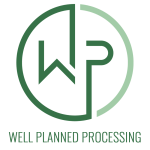Table of Contents
The Homeschool Market Explained:
Who Families Are and Why They’re Different
Understanding the history, values, and buying patterns that set homeschool families apart in today’s education market.
If you’re considering marketing to homeschool families, the first thing to understand is this: you’re stepping into a community with its own history, values, and ways of doing business. Homeschooling is not just another corner of the education market. It’s a movement shaped by decades of determination, built on trust, and carried forward by families who see education as a way of life.
That history matters because it explains why homeschoolers buy the way they do, why word-of-mouth carries more weight than advertising, and why brand loyalty runs so deep once trust is established. Without that context, even the best marketing efforts can misfire.
This article lays the foundation. We’ll look at where homeschooling came from, the values that continue to drive it, and the patterns that define homeschool families today. By the end, you’ll understand the DNA of this market—and why a thoughtful, relationship-first approach is the only path to success.
The Origins of the Modern Homeschool Movement
Legal Battles and Advocacy
Exclusive Client Access
I hope you’ve enjoyed this glimpse into the foundations of the homeschool market — where history, conviction, and community have shaped not only how families teach but how they buy. In the full article, you’ll uncover the deeper story behind this movement: how decades of advocacy forged a trust-first culture, how values drive every purchasing decision, and how understanding these roots transforms your marketing strategy from transactional to relational.
Our Marketing Insights Division is home to a growing library of in-depth research, strategy frameworks, and case studies built from over two decades of homeschool industry expertise.
These resources are reserved for active Well Planned Advertiser clients, providing exclusive access to:
- Deep market intelligence on the values, history, and mindset shaping homeschool families
- Proven strategies for reaching parents across digital, print, and community channels
- Insights on shifting education trends, funding models, and emerging marketing technologies
- Forward-looking analysis to help brands anticipate change and position for long-term growth
If you’re not yet a client, you can still preview a portion of each article below — or book a strategy call to learn more about partnership access.
About the Author
Rebecca Scarlata Farris
With nearly 35 years in the homeschool world — first as a student, then as a mom of five, and now as a business owner — Rebecca has dedicated her career to helping families thrive. She launched Family magazine, created the first Well Planned Day Planners, and pioneered digital conventions and tools that reshaped how homeschoolers connect and learn.
Today, as the founder of Well Planned Advertiser, she blends her deep community insight with technology and strategy to build systems that help homeschool businesses reach families with precision.





